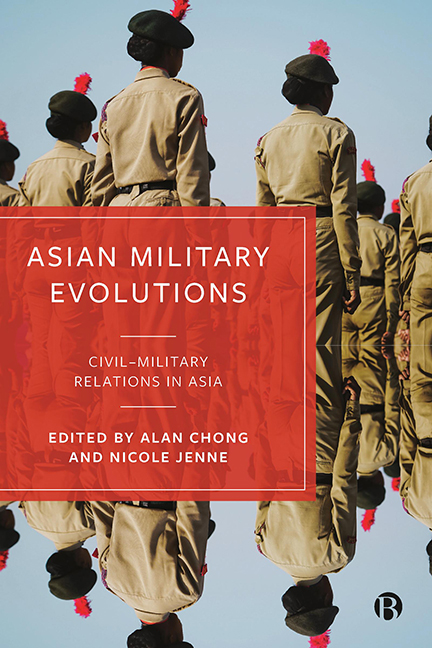Book contents
13 - Image Makeover: The Military Evolution of Japan’s Self-Defense Forces
Published online by Cambridge University Press: 18 January 2024
Summary
Debates on ‘Japan’s pivot in Asia’ have highlighted how ‘the Japanese government has been generating and deploying a fuller spectrum of strategic tools to position it to achieve its longer-term foreign policy objectives’ (Samuels and Wallace, 2018, p 710). Many of these initiatives have involved the JSDF. While scholarly debate has questioned just how radical or transformative Japan’s defence policy has been (Hughes, 2017), security practices have been more ‘evolutionary’ than revolutionary (Oros, 2008), even under a supposedly transformative leader like former Prime Minister Abe Shinzo (Liff, 2015). Military evolutions in Japan can be seen as an adaptive process whereby civil–military relations change and evolve slowly according to particular local concerns, interests, and tastes. The mechanisms can work in several ways over time incrementally. They can be developmentally driven, with initiatives launched by municipal authorities and/or private industry that relate to JSDF activities or bases. They can also be communication-driven, with initiatives coming from the JSDF to better explain and engage with the public.
This chapter investigates several key questions that underpin this volume as a whole. In stark contrast to other regional countries which suffered colonization, the JSDF has to deal with a colonial legacy whereby Japan was an imperial colonizer in Southeast Asia. Wartime history and past militarism have also doubtlessly shaped civil–military relations in Japan. As Japanese governments have worked to gain legitimacy and public acceptance for the JSDF both domestically and internationally, the effectiveness of civil–military relations here may be further viewed in terms of domestic/regional acceptance of JSDF existence and roles, on top of the conventional emphasis in the civil–military relations literature on achieving developmental and modernization goals. A key evolutionary process for the JSDF has been to reach out to the civilian population through demonstrating its role in humanitarian and disaster relief missions (HADR) as well as cultivating an approachable image through the use of popular culture including anime or public events linked to military cuisine such as “kaigun kare” (navy curry).
- Type
- Chapter
- Information
- Asian Military EvolutionsCivil-Military Relations in Asia, pp. 272 - 292Publisher: Bristol University PressPrint publication year: 2023



